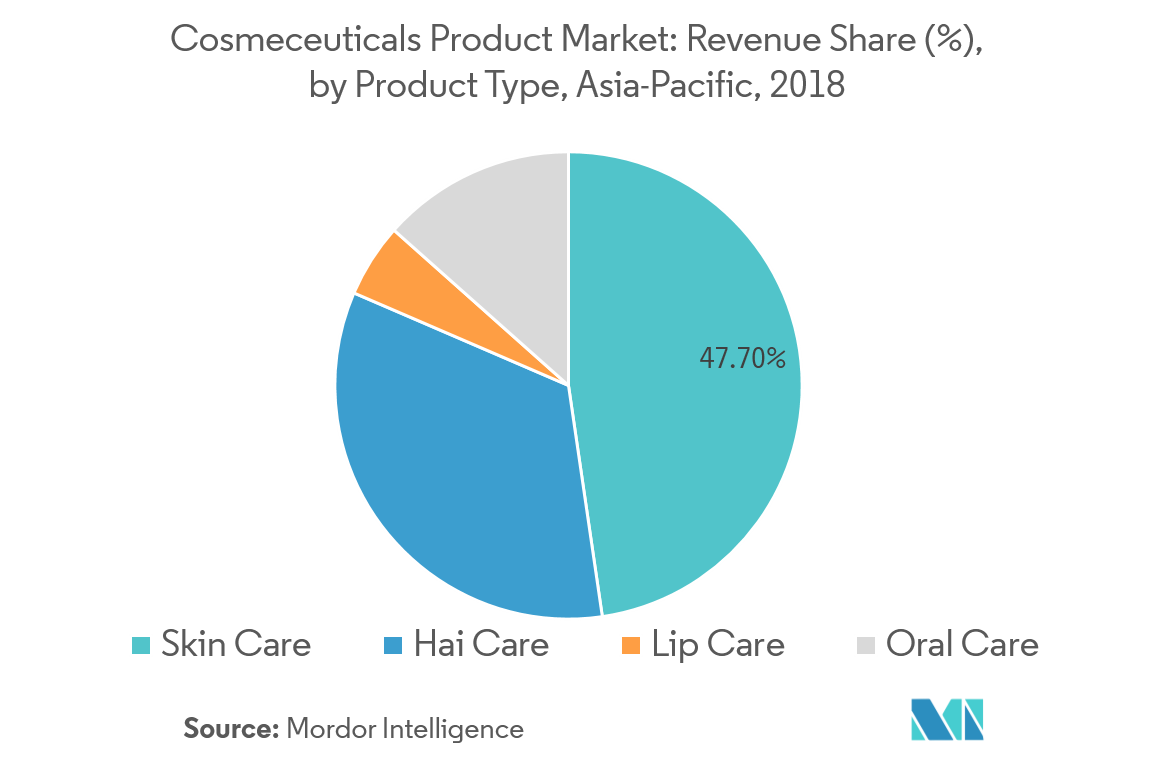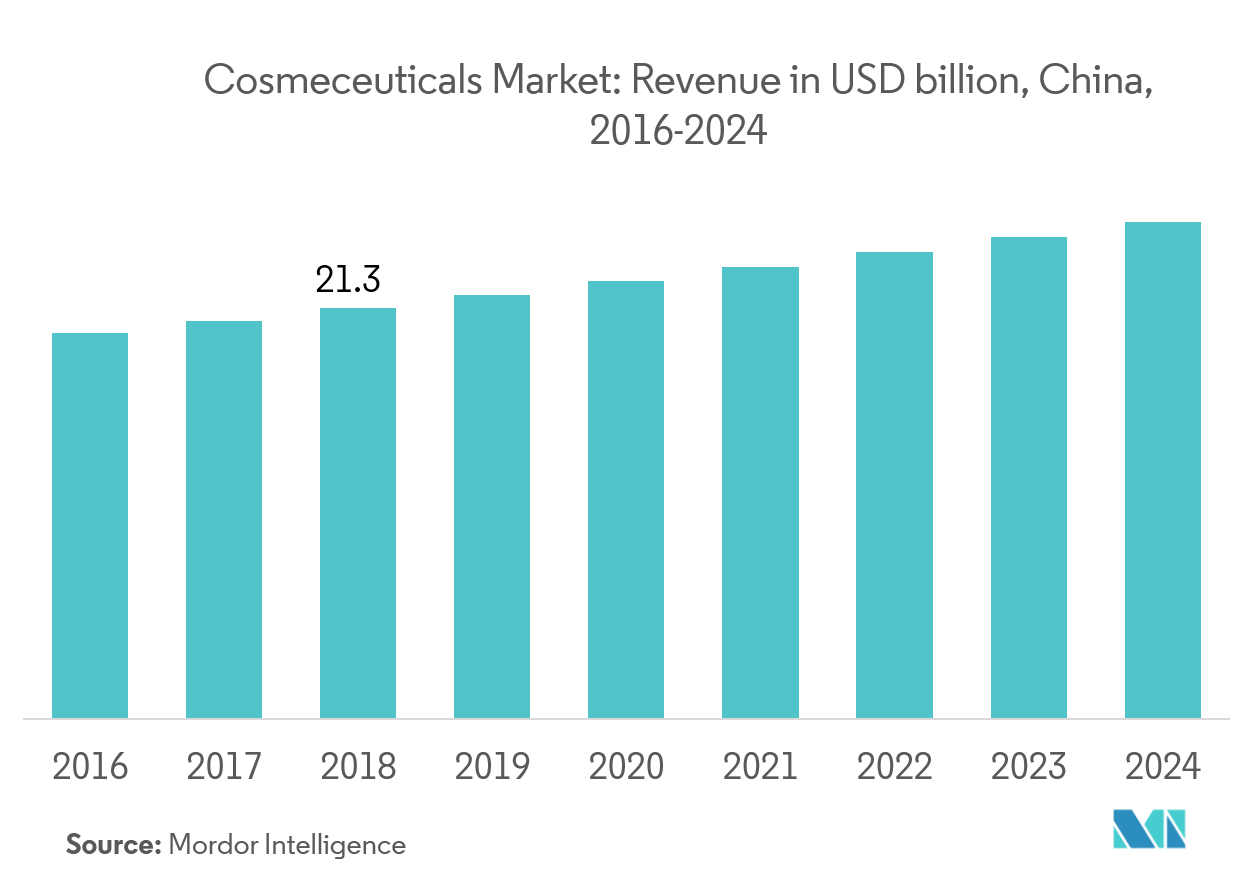Market Trends of Asia-Pacific Cosmeceutical Industry
This section covers the major market trends shaping the APAC Cosmeceutical Market according to our research experts:
Skin Care Segment Holds a Leading Share
Skincare is expected to be the dominating segment, followed by hair care in the forecasted period. Among skin care, anti-aging sub-segment is expected to contribute maximum revenue over the forecasted period. Anti-aging cosmeceuticals are formulated to counter the effect of aging among users, and to slow down the aging process, and to cover the damages from climatic conditions (sun, cold, and wind), smoking, stress, and environmental irritants, etc. Increase in problems like wrinkles, fine lines, sagging, pores and dryness, etc., is making people spend more on these products. Quickly aging Asia’s population has made aging one of the primary beauty concerns faced by the people, resulting in an increase in usage of products with anti-aging properties. Sun protection is becoming one of the important aspects of beauty in the Asia-pacific region, due to its beauty conscious population.

China Dominates the Cosmeceuticals Market
The Chinese cosmeceuticals market is projected to register an estimated CAGR of 6.9%, over the forecast period. Though the term ‘cosmeceuticals’ started gaining momentum in China recently, it has now become one of the most preferred product categories in the country. Busier and stressful lifestyles of consumers in the country, as well as worsening environmental conditions, created more concern around skin conditions, amid consumers who seek products for skin rejuvenation. This has led to an increase in sales of cosmeceuticals. Consumption of cosmeceutical products in China is most prevalent in tier 1 megacities of the country, with increasing penetration in tier 2 and tier 3 cities, which are experiencing an increase in China’s growing middle class and the consumption of cosmeceuticals in the country. Although a portion of consumers in China are willing to pay for branded or premium products, consumers tend to be less loyal to brands and more price-sensitive, when compared to the consumers in the United States or European counterparts.


